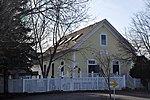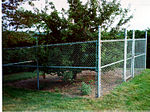2006 Danvers Chemical fire
2006 fires in the United States2006 in Massachusetts2006 industrial disastersChemical plant explosionsDanvers, Massachusetts ... and 5 more
Events in Essex County, MassachusettsExplosions in 2006Explosions in MassachusettsFires in MassachusettsIndustrial fires and explosions in the United States

The 2006 Danvers Chemical fire took place at approximately 2:46 AM EST on Wednesday, November 22, 2006. An explosion occurred at the plant of solvent and ink manufacturer CAI Inc., located in the Danversport area of Danvers, Massachusetts, which it shared with paint manufacturer Arnel. The explosion was caught on security camera and was reportedly heard up to 50 miles (80 km) away in southern Maine and New Hampshire. Arnel ceased operations after the blast.
Excerpt from the Wikipedia article 2006 Danvers Chemical fire (License: CC BY-SA 3.0, Authors, Images).2006 Danvers Chemical fire
Water Street,
Geographical coordinates (GPS) Address Nearby Places Show on map
Geographical coordinates (GPS)
| Latitude | Longitude |
|---|---|
| N 42.5476 ° | E -70.9195 ° |
Address
Water Street 128R
01923
Massachusetts, United States
Open on Google Maps











